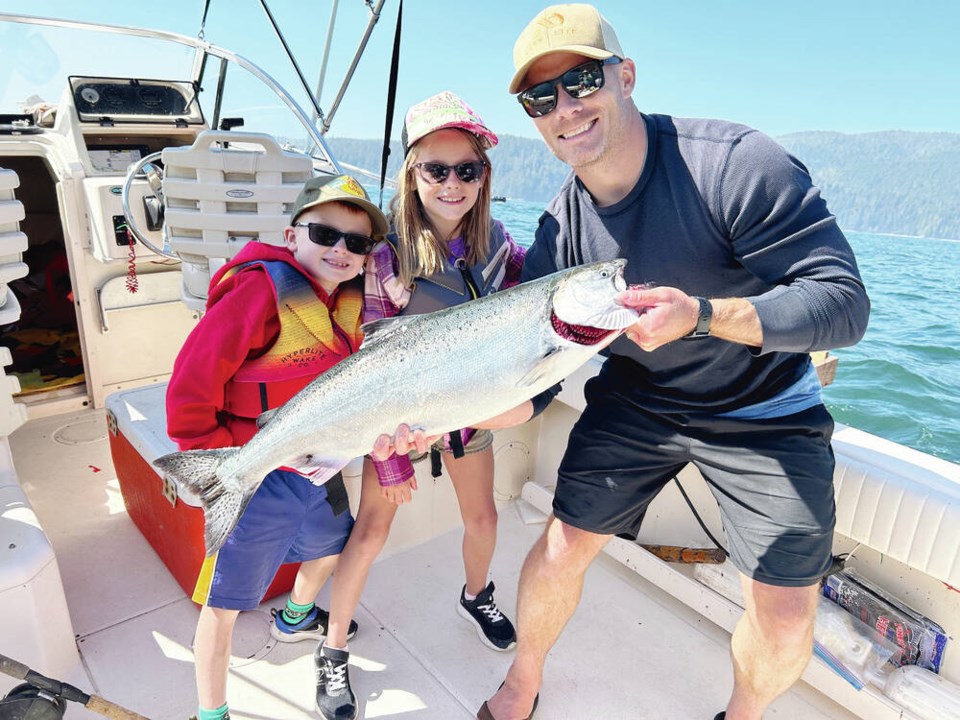Recreational anglers say the federal government is using outdated predictive modelling and isn’t consulting the locals in its proposal to add further closures to the chinook fishery around Port Renfrew to protect the endangered southern resident killer whales.
“I’ve never seen a southern resident killer whale in the foreshore area and I’ve been fishing there for 55 years,” Wayne Friesen, a resident of the Cowichan Valley and chair of the B.C. Recreational Fishing Association, said in an interview on Wednesday.
The Department of Fisheries and Oceans is proposing an expansion of foraging zones for the orcas that could potentially reach right up to shorelines surrounding Port Renfrew, including a 10-kilometre stretch of foreshore where most small-boat anglers and charter companies fish from April to October.
The closures on chinook salmon would be in effect from July 16 to to Oct. 31, which is prime fishing season for charters and recreational anglers. It could force them to travel greater distances or “pack it in,” said Friesen.
The anglers’ association is adding its voice against the closures, joining the Port Renfrew Chamber of Commerce in sending open letters to federal Fisheries Minister Diane Lebouthillier, who is expected to make a decision on the expanded closures for 2024-25 in the coming days after a month-long public engagement that ended Feb. 12.
“These unwarranted closures will have negligible effect on the recovery of southern resident killer whales, but will undoubtedly have a disastrous impact on the community of Port Renfrew and thousands of sports fishing anglers seeking the joys of fishing for chinook salmon,” Friesen told the minister in his letter.
He said the impact of chinook salmon fisheries on the recovery of southern resident killer whales is negligible compared to other factors such as pollution, vessel noise and increased populations of pinnipeds such as seals.
“Closing fishing areas without addressing these more significant threats will do little to achieve meaningful conservation outcomes for the whales.”
Friesen said the science the DFO is using is based on modelling and not actual observations of the orcas in the proposed closure areas.
Friesen said a 2002 study by the University of British Columbia observed the whales off Swiftsure Bank, but they never came close to the shore areas.
“The observations of sports fishers and DFO officers that are in the area, every day through the summer period, rarely see SRKW’s at all, let alone do they see them foraging in these shallow waters that the DFO want to close to fishing,” Friesen said.
He says the DFO has ignored other studies from UBC that support the on-the-water observations of sport anglers and DFO officers that the killer whales forage in deeper water.
Like the Port Renfrew Chamber of Commerce, Friesen said the proposed closure would devastate the community’s economy, and there has been inadequate consultation with the broader community and fishing groups.
Friesen said the DFO has provided no recent evidence to prove that static fishing closures provide any more protection for the whales than “avoidance bubble zone management,” which would close the fishery when the orcas are present, and that there is no way to determine in the future if the closures would have any impact.
The group wants the DFO to use the avoidance bubble management plan currently used in U.S. waters.
Friesen is asking the minister to maintain the status quo for Area 20 around Port Renfrew, and open Area 21 around Nitinat from Bonilla Point Light to Pachena Point for chinook salmon retention with the 2022/23 regulations in place.
Friesen also wants the DFO to create a “more functional and representative working group” to include sports anglers, and initiate a full review of the chinook fishery and killer whale recovery before applying any more closures.
Port Renfrew’s chamber of commerce said last month the vitality of the town hinges on businesses such as gas stations, stores, hotels and cabins that cater to fishing during the season. Its own survey of lodges, restaurants and fishing charters showed the fishing industry generates $158,000 per day or about $26 million over a 165-day fishing season. That includes money spent on fishing charters, fish processing, accommodations, restaurant meals, gas, groceries and supplies, as well as those who bring their own boats and take advantage of services.
DFO said management measures address key threats to the recovery of the southern resident killer whales related to reduced availability of food and increased noise and disturbance in their habitat. The measures not only include area-based fishing closures, but also vessel-approach distances, sanctuary areas and speed-restricted zones.
The federal agency also said its measures are informed by the best available information and science, as well as advice from Indigenous groups, technical working groups, stakeholders and the public.



